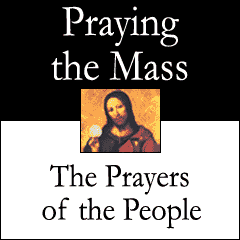The first time I even became aware of this question was when a Catholic priest attended one of our Lutheran Synodical meetings and expressed his surprise at the robust male voices that dominated the singing. Not so in his own fold, he told us (and I have come to know only too well).
For some reason (or reasons) the Lutheran Church of Australia is a “blokey” church. That could be for any of the following reasons:
1) it has a strong patriarchal tradition
2) it is good at retaining its youngsters—male and female
3) it is a rural (ie. farmer) dominated church
4) it has robust theology, liturgy and music.
I would be interested in hearing from Lutherans out there what they think.
In any case, it is not the general experience of the rest of our Christian community, and Robin Russell, the managing editor of the US “United Methodist Reporter” believes she has some insight into the reasons why, in an article entitled “Are churches ‘too feminized’ for men?”. The article focuses on another work, by David Murrow, called Why Men Hate Going to Church. (You can read Murrow’s basic thesis in an article here)
Murrow believes the churches have actively followed an agenda that will drive men away while attracting women. He writes:
“Most churches offer a safe, nurturing community, an oasis of stability and predictability. Studies show that women and seniors are the groups most likely to seek these things. Our comforting congregations provide women with what they long for, so naturally they show up in large numbers.
“On the other hand, men and young adults are drawn to risk, challenge, and daring. While our official mission is one of adventure, the actual mission of most congregations is making people feel comfortable and safe… Church insiders routinely block anything challenging or innovative because it might make people feel uncomfortable or unsafe. This caution keeps the peace in the short term, but it drives men and young adults away over the long term.”
Or put it another way:
“Every Muslim man knows that he is locked in a great battle between good and evil… But most Christians today, he said, see their faith more in terms of “having an unconditional love relationship” with Jesus. And if that’s the punch line of the Gospel, then you’re going to have a lot more women than men taking you up on your offer, because women are interested in a personal relationship with a man who loves you unconditionally. Men, generally, are not.”
All this should be ringing bells with us Catholics too. How often have you heard your parish leaders tell you that they are trying to make the parish “community” a “safe place”, a “place of nurture”, a place where people “can experience unconditional love”, and where “they can feel free to open up and share their inner selves”?
I am also interested to note that in my “mass community”, all the leaders are women. I go to a pastoral meeting, and I am the only bloke there if Father doesn’t show. Sister, the Pastoral Associate, leads the meetings. Where are the guys? Even if the meeting is held in the home of a leading family, the husband doesn’t join the group. It’s a “women’s group” doing “women’s business”.
We need to ask ourselves too what the effect on the Christian message in the west has been of the push to ordain women as priests and ministers. Has this only contributed to the fluffiness of the Church? Mind you, some of our priests could do with a few courses about getting in touch with their masculine side…
Nevertheless, I am a little wary, because further down in her article, Robin Russell cites the work of Leon J. Podles in “The Church Impotent: The feminization of Christianity”. (There is a review of that work here). On the basis of his work, she writes:
“After all, churches didn’t become “feminized” overnight… Dr. Podles traces a feminine characteristic of the church back to the 12th century, when medieval female orders began to rise and mystic Bernard of Clairvaux popularized the metaphor of the Church as the Bride of Christ.”
I think there is a difference between being theologically, liturgically and typologically “feminine before God”, and actually being “effeminate” as a social community. The Church can be the Bride of Christ without being a community suitable for women only.
In any case, Murrow, Russell and Podles all give us food for thought. Especially in this day and age when we are scrambling like lemmings to toss out all masculine imagery in favour or de-sexed or feminine imagery in the Church. Take for instance the following two suggestions by Murrow for countering the feminisation process:
“Principle three: Present Christ’s masculine side. Pastors often focus on Jesus’ tenderness and empathy. This is a good thing, but presenting soft Jesus week after week runs the risk of turning men off. What man wants to follow Mr. Rogers? Even more bewildering are today’s praise songs – many of which feature lovey-dovey lyrics set to a romantic tune. Guys may feel unnatural singing romantic words to another man. Men want a leader, not a love object.
“Principle four: Avoid feminine terminology. Christian men use terms such as precious, share, and relationship — words you’d never hear on the lips of a typical man. We talk a lot about the saved and the lost; men don’t want to be either. And here’s a term that puzzles a lot of guys: a personal relationship with Jesus. Christ’s bold, masculine command, “Follow Me!” is now, “Have a relationship with Me.” We’ve recast Jesus’ offer in feminine terms.”
That’s strong stuff. Are we up to the challenge?







